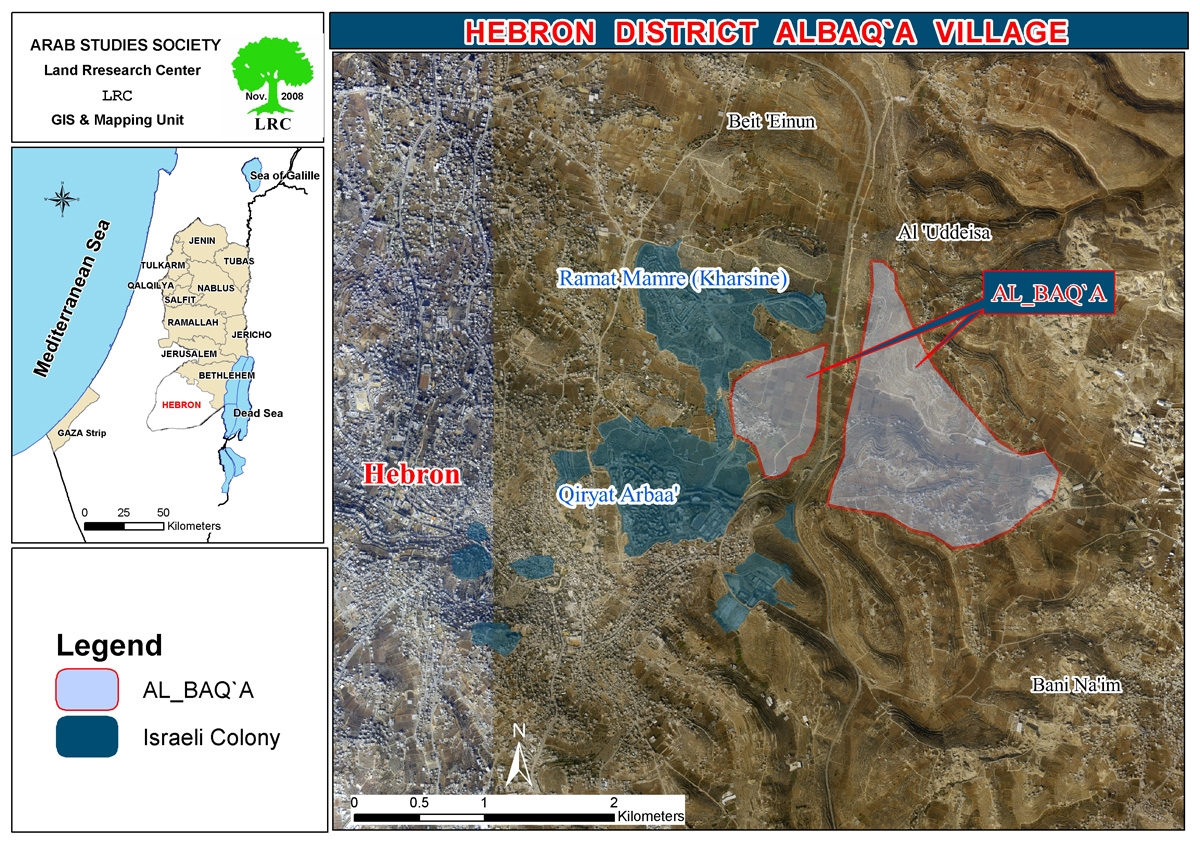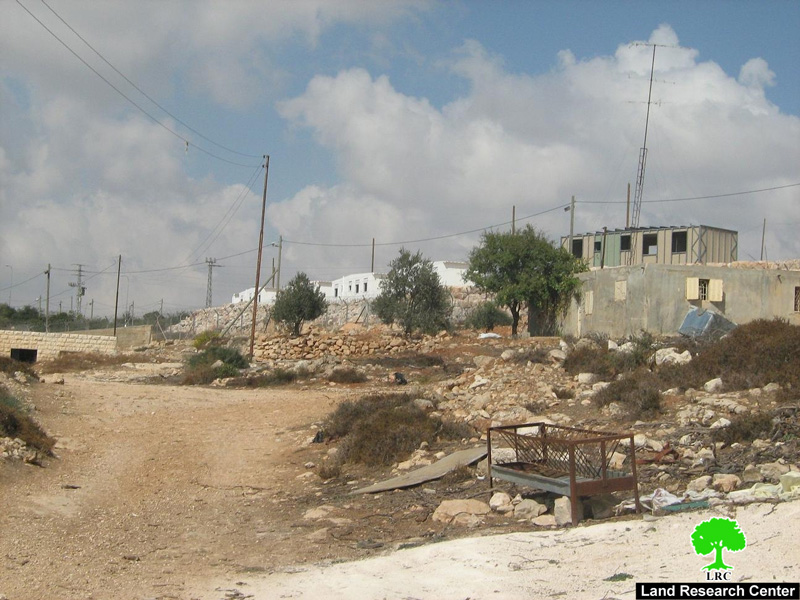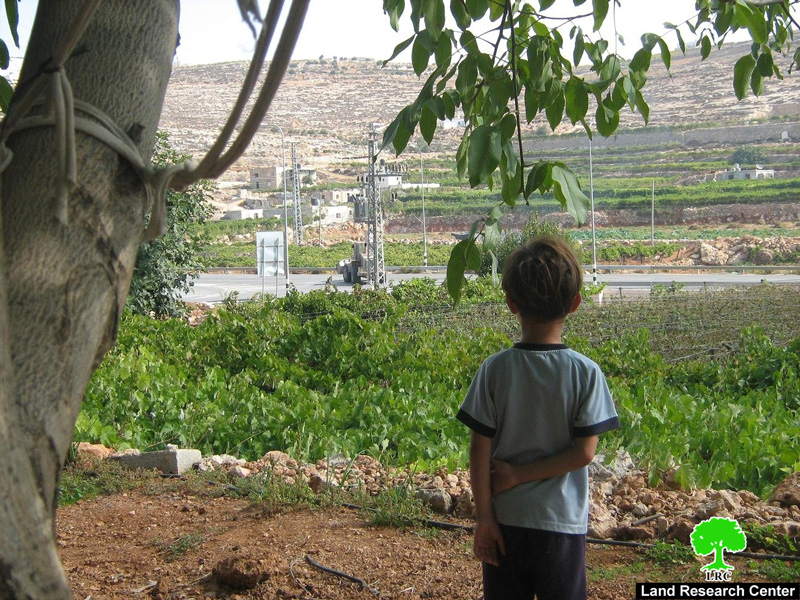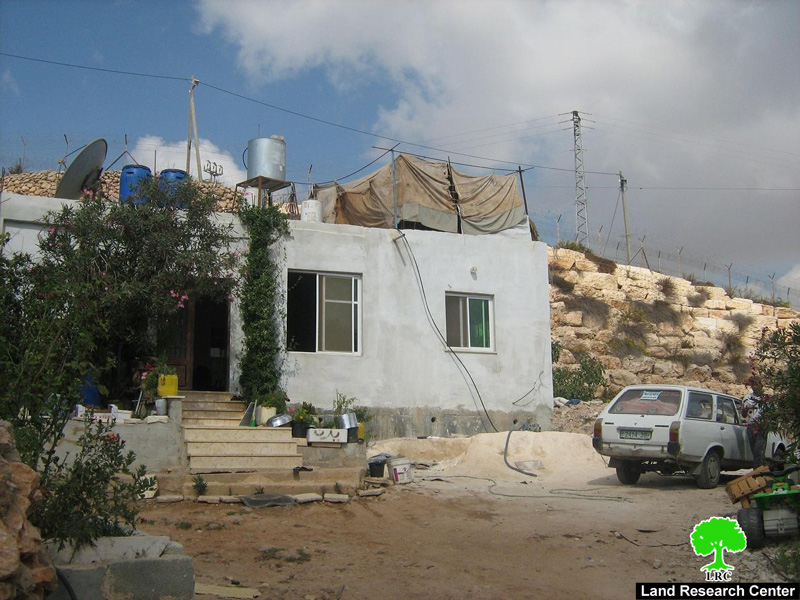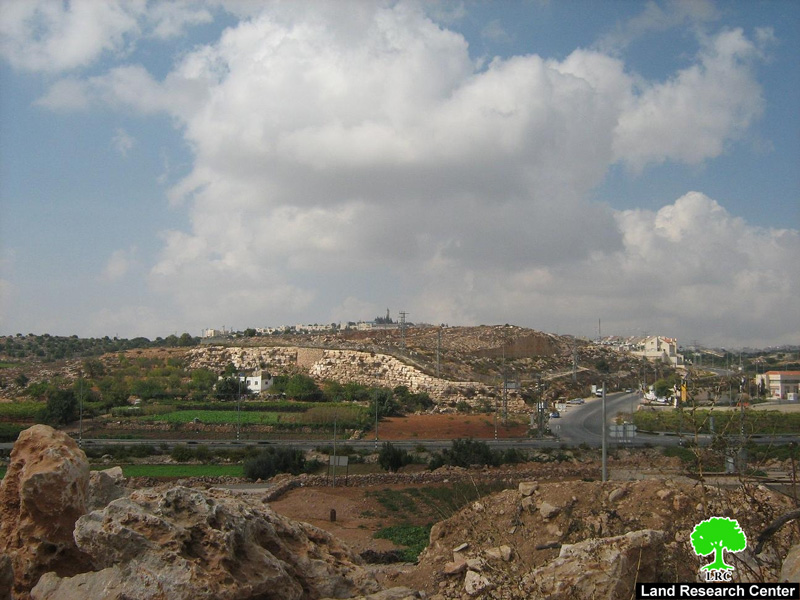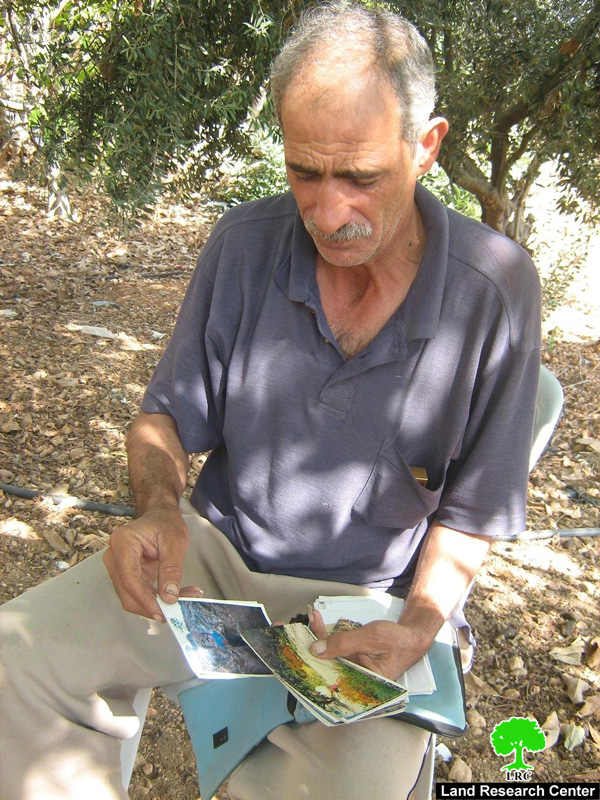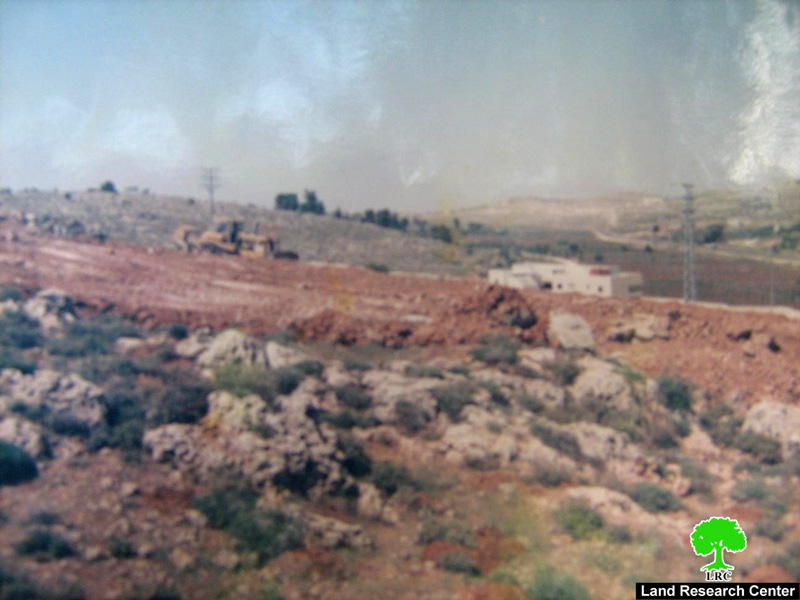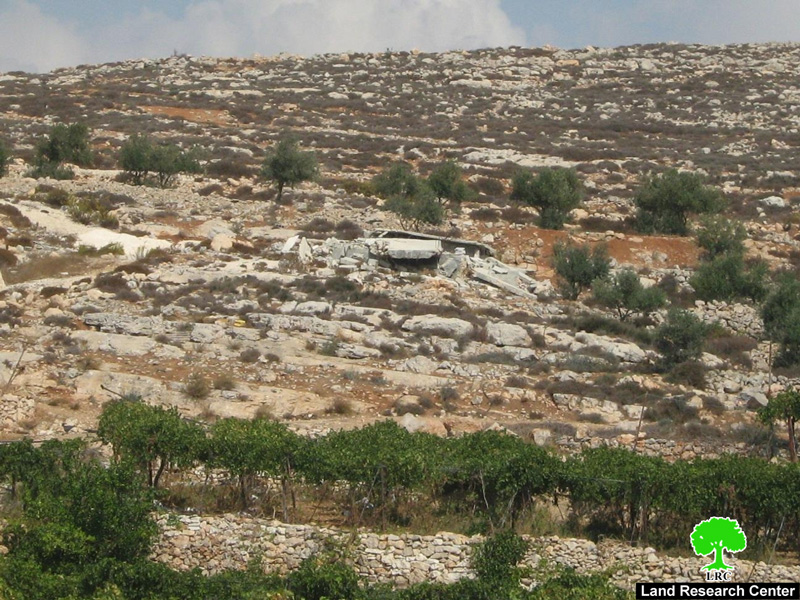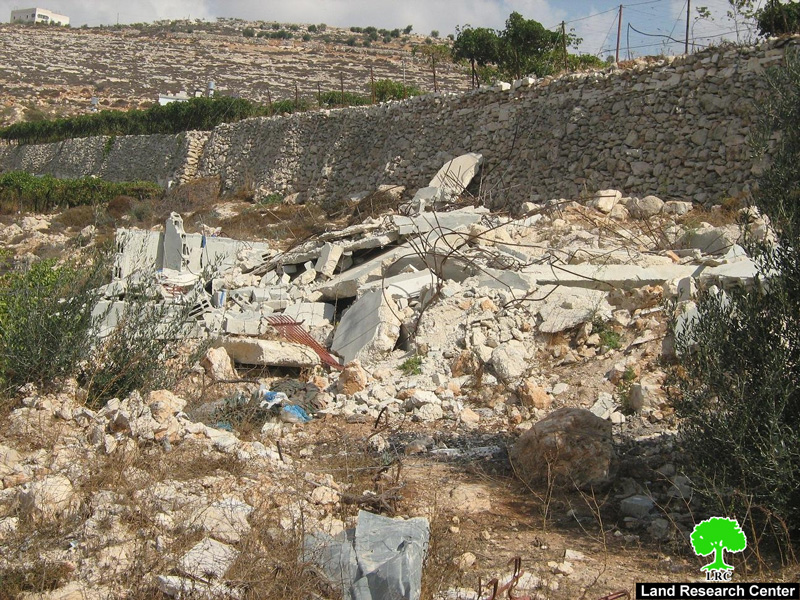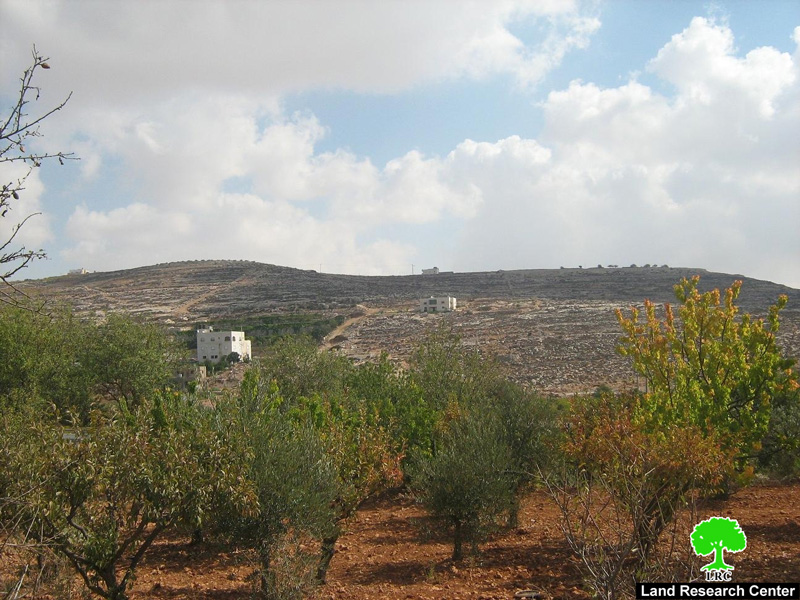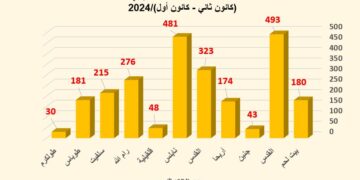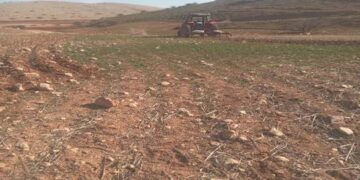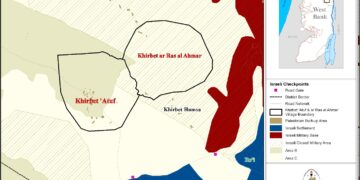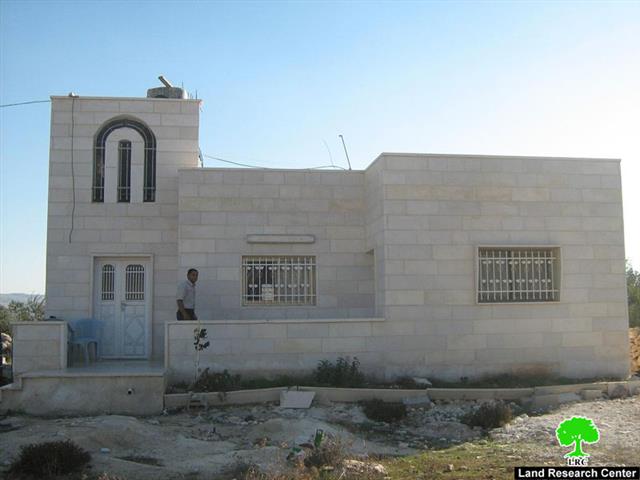Israeli colonists expanded the colony of Kharsina, located east of the City of Hebron, as they have placed 8 mobile caravans on confiscated Palestinian lands within the boundaries of the colony. The targeted lands are owned by Hajj Omar Salem Jaber and it was part of 150 dunums confiscated earlier for the purpose of establishing the colony.
Photo 1: The new mobile caravans placed by Kharsina colonist atop Palestinian lands
Photo 2: A child from Jaber clan looking at an Israeli bulldozer plowing Palestinian lands.
Kharsina History:
The colony was named as such due to the fact that the first colonists who settled there came from the colonies that were present in Sinai, Egypt after its liberation. They called the newly-colonized area as Har Sinai (meaning “the Mountain of Sinai”) and afterwards the name was transformed to become Kharsina.
The colony was created in the year 1985 when a group of colonists, backed by Israeli occupation forces, placed a fence around 500 dunums of Palestinian lands belonging to the members of the Jaber and Al Bakri clans in Hebron City. The fencing took place while Israeli bulldozers established a road cutting through the fenced dunums. However, these measures by the colonists did not prevent Palestinian land owners from being present in their lands despite of all the obstacles and harassment put forth by the colonists. Since that year, modern-age colonial housing units began appearing on the hills of the colony until its current population reached 1,500 colonists.
The Memories of the Owner of the Land:
The colony of Kharsina has devoured hundreds of dunums and uprooted hundreds of trees for the benefit of constructing colonial units. Most of the targeted lands were owned by Mr. Jouda Jaber who told Land Research Center’s (LRC) field researcher about some of the suffering he and his family had to endure due to the presence of the colony.
Mr. Jaber began telling his story while holding some pictures he took of his land before colonists overtook it. His land is located only few meters away from his caveshelter. Yet, he cannot reach it as it lies behind the electrical fence surrounding the colony. He indicated that his grandfather had bought the land for 22 French Frank. He continued saying that:
This cave that we are currently living in is the evidence that it was the Palestinian who lived and used this land long before the coming of colonists. Let those who pride themselves of observing human rights come and see the area in which me and my 15-member family live in and compare it with that used by the colonists !!!!
It’s worth noting that the area of the cave does not exceed 100 m2. Mr. Jaber is prevented from building a house in the area as to “protect the security of the colony.” Israeli occupation forces have demolished in 2002 the house in which Mr. Jaber was living in. Its area used to be 130 m2 that cost him around $30,000. After its demolition, he and his family went back to live in a 16 m2 room in his father’s old house. He also placed a tent atop of his father’s old house as to make room for his family while renovating an old cave behind the house. He added the following: 'In the 21st century Israeli colonists have forced the legal owners out of their lands and compelled them to live in the caves.'
Photo 3: Picture of the ruins of Mr. Jouda Jabe’s house demolished in 2002
due to its close proximity to the colony of Kharsina.
Photo 4: Picture of the shelter of Mr. Jaber located near the wall of the colony of Kharsina.
A tent appears atop of his father’s house as an extension of his shelter as he is not allowed to build an additional floor.
Photo 5: The shelter of Mr. Jouda Jaber.
A number of attacks were carried out by Kharsina colonists against Mr. Jaber’s family. He recalls when, in 2003, colonists threw stones at his father’s house (located right beneath the colony) which led to breaking the windows and water tanks. Some of the debris of the broken windows hit his daughter (who was 3 at the time) in the eye which necessitated transferring her to the eye hospital in Jerusalem for an urgent operation.
Photo 6: Mr. Joda Jaber with pictures of his confiscated lands
It is noteworthy to point out that in 1995 the colonial By-Pass Road 60 has cut through the Palestinian farm lands located east of the colony of Kharsina. A gas station was also set up nearby as to provide the needed service for Kharsina colonists using the Road. The station was constructed atop 8 dunums owned by Mr. Omar Salem Jaber despite the fact that he owns an Ottoman deed declaring his ownership of the land.
Photo 7: Israeli bulldozers leveling Palestinian lands used as a site
for the gas station at the entrance of the colony of Kharsina.
Photo 8: The Kharsina gas station
House Demolition in Al Beqa Region:
The region of Al Beqa has witnessed a wave of house demolitions in the past few years under the pretext of being built in front of the colony of Kharsina implying that Palestinian houses endanger the lives of the colonists of Kharsina.
Photo 9: A mountain occupied by colonists located across the colony of Kharsina in Al Beqa region.
The owners of demolished houses reverted back to building shelters made of tin and bricks on the hope of preventing it from being demolished again. Yet, occupation being what it is, it demolished a number of houses that left 63 Palestinians homeless most of which are children. The following table lists the demolitions that took place in Al Beqa since 1998:
|
House Owner |
Year of Demolition |
No. of Family Members Displaced |
|
Fayez Mohammad Faraj Jaber |
1998 |
3 |
|
Fadi Jawad Mohammad Jaber |
2002 |
15 |
|
Hasan Bader Jaber |
2002 |
14 |
|
Jouda Jabber |
2002 |
15 |
|
Faraj Ibrahim Jaber |
2007 |
4 |
|
Hani Salim Jaber |
2007 |
5 |
|
Imad Mohammad Bader Jaber |
2007 |
7 |
|
TOTAL |
63 |
|
Despite the fact that the owners of the demolished houses are currently living in a number of bruxes, Israeli occupation authorities were quick to issue demolition orders against them. A lawyer was hired to try to forestall the demolitions as long as possible.
Photo 10: Debris from the demolished house of Mr. Faraj Jaber
Photo 11: Debris from the demolished home of Mr. Hani Jaber
Also in Al Beqa, a group of colonists established an agricultural road and uprooted around 150 olive trees owned by Mr. Faisal Mohammad Jaber. Colonists usually chase after land owners the moment they see them accessing their lands. Palestinians in the area fear that the colonists will be able to overtake the hill of Mr. Faisal for further colonial expansion.
The Palestinian residents of Al Beqa issued a plea through LRC to provide physical protection to them and to their lands from the colonists and their future plans of further expansion. They have, also, asked for helping them in getting the required building permits in addition to making their current homes safer for them to live in. Moreover, Al Beqa residents are currently forced to take a 30-minutes long detour to get to the City of Hebron while their original road (cut by the colony of Kiryat Arba) used to take them only 10 minutes. More often, they find themselves obliged to take sandy agricultural roads that are not suitable for transporting goods or agricultural products.
Kharsina Colony:
The colony of Kharsina is located in Al Beqa neighourhood east of the City of Hebron. The closest colony to Kharsina is Kiryat Arba and they are connected with each other by a main road on which a military camp exists. By-Pass Road 60 is located east of the colony while the City of Hebron is situated west of the colony.

Photo 12: An overview of the colony of Sinai
Prepared by
The Applied Research Institute – Jerusalem
Prepared by
The Land Research Center
LRC


